Is John Masters Shampoo Safe?
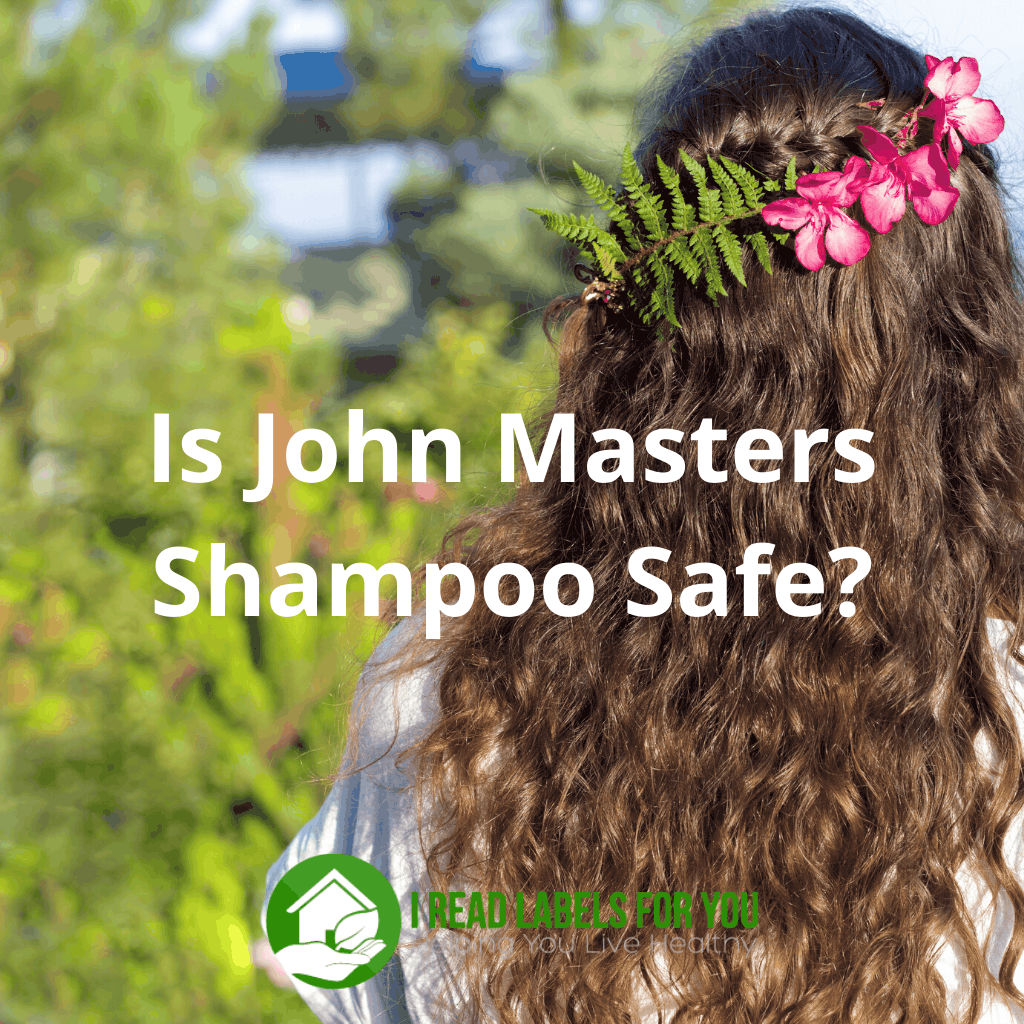
Lustrous hair is everyone’s dream. We are often lured into buying wrong products that promise this result. Although my main criterion in selecting hair products is safety of the ingredients, I still want my hair to look shiny and voluptuous. That is why I stopped using soap for my hair. It is true that it is the safest choice, but it did not work for me. Therefore, I am always on the lookout for a safe shampoo that will do miracles with my hair. So, in this post we will explore John Masters Organics shampoo called Spearmint & Meadowsweet Scalp Stimulating Shampoo. Read on to find out if John Masters shampoo ingredients are safe for you.
Does a true organic shampoo exist?
When manufacturers apply the term “organic” to their product, they may mean one of two things. Thus, they may want to imply that their product has an organic certification. Conversely, they may want to draw attention to the fact that some ingredients in the product are organic. In both cases, their product’s name may carry the word “organic” because the FDA, which regulates personal care products, does not regulate the use of the term “organic.” That is to say, manufacturers can freely use the term “organic” for the promotion of their product as long as they do not use the USDA organic certification symbol.
In my search for an organic product, I first and foremost look for the USDA organic certification seal. To clarify, this agency certifies ingredients of agricultural origin if they meet its production, handling, processing, and labeling standards. And if a certain product, say a shampoo, wants to get an organic certification, 95% of its ingredients should already be USDA certified organic.
So, is there such a thing as “organic shampoo”? Is John Masters organic shampoo truly organic?
To reiterate, only ingredients of agricultural origin may get organic certification. Hence, another question arises: is shampoo an agricultural product? In other words, can a shampoo be comprised of 95% agricultural ingredients that could qualify for organic certification? No, it cannot, and here is why.
Why John Masters Organics shampoo is not certified organic
It is because John Masters shampoo consists of many ingredients of non-agricultural origin that it cannot get an organic certification. These ingredients are an indispensable part of any shampoo that aims at performing its main function, i.e. cleaning, well. Generally, a shampoo contains surfactants, emulsifiers, and preservatives. However, none of these chemicals are eligible for organic certification.
But what if a shampoo formulation allows for these chemicals to fit in the remaining 5% and the other 95% are certified organic? Well, hypothetically this is possible, but in all my years of shampoo research I have not come across such a shampoo formula.
And now, let us look at John Masters Organics ingredients.
John Masters shampoo ingredients
The following are the ingredients for John Masters Organics, specifically for Spearmint & Meadowsweet Scalp Stimulating Shampoo:
Aloe Barbadensis Leaf Juice (Aloe Vera)*, Cocamidopropyl Betaine, Sodium Lauroyl Methyl Isethionate, Glycerin, Water, Sodium Levulinate, Mentha Viridis (Spearmint) Leaf Oil*, Spiraea Ulmaria Flower Extract (Meadowsweet)*, Mentha Piperita (Peppermint) Oil*, Illicium Verum (Anise) Fruit/Seed Oil, Eugenia Caryophyllus (Clove) Leaf Oil, Mentha Arvensis Leaf Oil, Gaultheria Procumbens (Wintergreen) Leaf Oil*, Apium Graveolens (Celery) Seed Extract, Lactobacillus/Punica Granatum Fruit Ferment Extract (Pomegranate), Capsicum Frutescens Fruit Extract, Prunus Amygdalus Dulcis (Sweet Almond) Oil, Smithsonite Extract, Eucalyptus Globulus Leaf Oil (Eucalyptus), Helianthus Annuus (Sunflower) Seed Oil*, Oenothera Biennis (Evening Primrose) Oil, Simmondsia Chinensis (Jojoba) Seed Oil*, Linum Usitatissimum (Linseed) Seed Oil, Tocopheryl Acetate (Vitamin E), Panthenol (Vitamin B-5), Mentha Viridis (Spearmint) Leaf Oil, Mentha Piperita (Peppermint) Oil, Gaultheria Procumbens (Wintergreen) Leaf Oil, Hydrolyzed Soy Protein, Decyl Glucoside, Sodium Phytate, Sodium PCA, Caprylic/Capric Triglyceride, Caramel, Potassium Sorbate, Sodium Benzoate, Citric Acid, Limonene†
*Organic
†A natural component of essential oils
So, let us talk about the surfactants and preservatives in John Masters Organics.
Surfactants in Spearmint & Meadowsweet Scalp Stimulating Shampoo
There are three cleansing agents, aka surfactants, in John Masters Organics shampoo: cocamidopropyl betaine, sodium lauroyl methyl isethionate, and decyl glucoside.
Cocamidopropyl betaine
To begin with, many companies point out that this ingredient is “natural” because it is derived from coconut. Although it is derived from coconut, the process of derivation alters the source ingredient and the end chemical has nothing in common with it. To demonstrate, this is what happens.
First, the processors derive coconut fatty acids from coconut oil. Then, they create a reaction between coconut fatty acids and 3-dimethylaminoproplylamine (DMAPA) to produce amidoamine. Afterwards, they combine amidoamine with monochloroacetic acid to get to cocamidopropyl betaine. So, I think the fact that coconut oil is used initially to make CAPB becomes irrelevant.
Further, there is evidence that cocamidopropyl betaine may cause allergic skin reactions in some people. Hence, the American Society of Contact Dermatitis lists cocamidopropyl betaine as one of its core allergens, even in concentrations as low as 1%. Moreover, due to high rates of cases involving allergic reactions, the society named it the 2004 Allergen of the Year.
You can learn more about cocamidopropyl betaine in my post about cocamidopropyl hydroxysultaine which is its relative.
Sodium lauroyl methyl isethionate
This ingredient in John Masters shampoo has a rating of 1 and limited safety data in the EWG Skin Deep database. It is one of the 12 isethionate surfactants that CIR describes in its 2017 safety report.
To clarify, the report does not provide much safety information on sodium cocoyl isethionate in particular. However, the CIR Panel believes that its safety profile is similar to that of sodium cocoyl isethionate due to their shared core chemical structure (source). Thus, the table below presents the difference between sodium lauroyl methyl isethionate (which is in John Masters Organics shampoo) and sodium cocoyl isethionate (which is not). The similarities are in bold font.
| Sodium lauroyl methyl isethionate is | Sodium cocoyl isethionate is |
| the sodium salt of | the sodium salt of |
| the methyl lauric acid ester of | the coconut fatty acid ester of |
| isethionic acid. | isethionic acid. |
In case with sodium cocoyl isethionate, the CIR report finds it non-mutagenic, non-sensitizing, non-irritating, and not causing birth defects in animal studies (source). It is also considered a gentle surfactant.
Decyl glucoside
To begin with, decyl glucoside is one of the most common surfactants from a group of 19 glucoside surfactants. What makes them popular is their mildness and non-irritating quality to the eyes. That is why they are especially common in baby shampoos.
In addition, decyl glucoside is biodegradable and contains no petroleum contaminants. Therefore, it is not likely to cause contact allergy. Nevertheless, some people may have a skin reaction to it.
To know more about glucoside ingredients please read my post Are Glucosides Safe?.
Preservatives in Spearmint & Meadowsweet Scalp Stimulating Shampoo
The preservatives in this John Masters shampoo are sodium levulinate, potassium sorbate, sodium benzoate, and sodium phytate.
Sodium levulinate, potassium sorbate, and sodium benzoate
Because liquid shampoos are mostly water, they must contain preservatives. In my opinion, these three are some of the top choices because they are food-grade preservatives. Not that I advocate eating food with preservatives, but they are as safe as it gets.
However, sodium benzoate may cause an allergic reaction in some people if they use it in concentrations over 5% (source). If you are interested in knowing whether sodium benzoate produces a carcinogen when it interacts with citric acid (an often-repeated but groundless claim circulating on the Internet), please read my Sodium Benzoate & Citric Acid Myth post.
Sodium phytate
Despite some unsupported negative information about sodium phytate on the Internet, I would not worry about it too much.
To begin with, the Cosmetic Ingredient Review panel published a report on it in September 2018. To illustrate, the report states that one clinical study tested a cream with 0.49% sodium phytate on 22 subjects and found no irritation. Another study tested a product with 50% sodium phytate and classified it as a minimal irritant to non-irritant. In addition, in a test involving 25 subjects, a product with 1% sodium phytate did not cause skin sensitization. Lastly, in vitro tests showed no genotoxicity and no sensitization potential.
So, based on my research, I believe sodium phytate is safe to use. In addition, it is often a component of Dermofeel PA-3, a preservative that helps make the preservation system more robust. For example, one of my favorite shampoos, which you can read about in my post The Best Safest Shampoo, contains this ingredient.
Conclusion about John Masters shampoo
In conclusion, although Spearmint & Meadowsweet Scalp Stimulating Shampoo has several organic ingredients, it is not a certified-organic shampoo. And it cannot be because it does not consist of 95% of individually certified organic ingredients of agricultural origin.
So, mainly because of cocamidopropyl betaine, John Masters Organics shampoo is “okay” from a safety standpoint, meaning there are both better and worse shampoos.
Feel free to visit my shop to browse multiple options for non-toxic personal care and household products. Additionally, you are welcome to book a consultation with me to get help with living healthy. Finally, consider applying to the Savvy Consumer Circle to get ongoing guidance with non-toxic living and instant access to all my e-books.
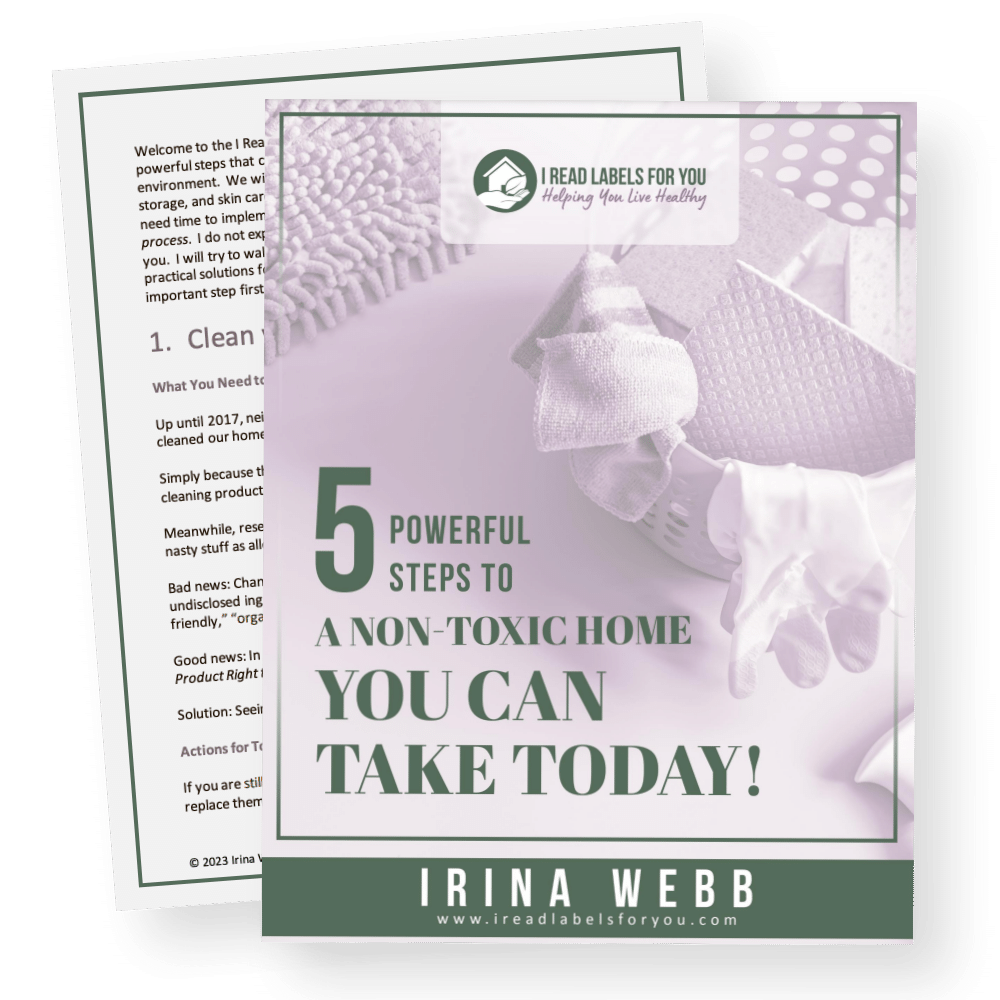
Download The Free Guide!
5 Powerful Steps To A Non-Toxic Home
Join our informed consumer community and get our free guide the “5 Powerful Steps To A Non-Toxic Home”.

 Written by
Written by 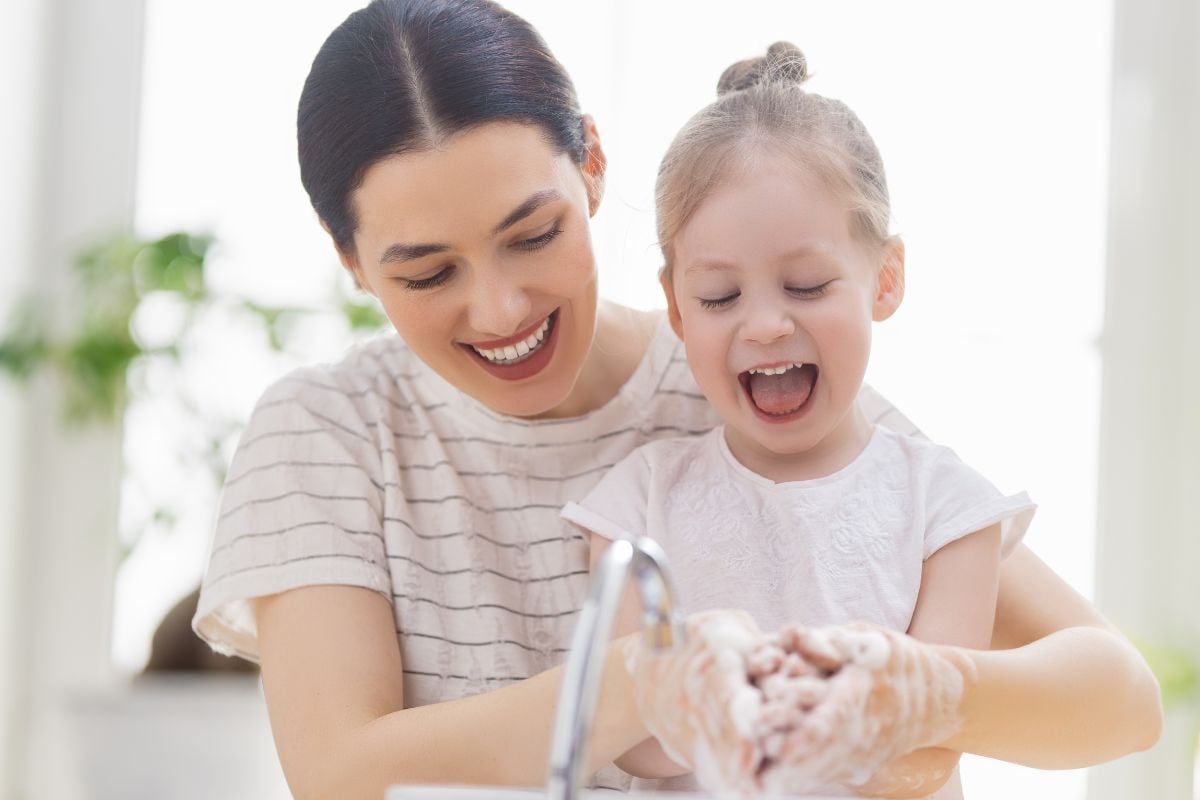
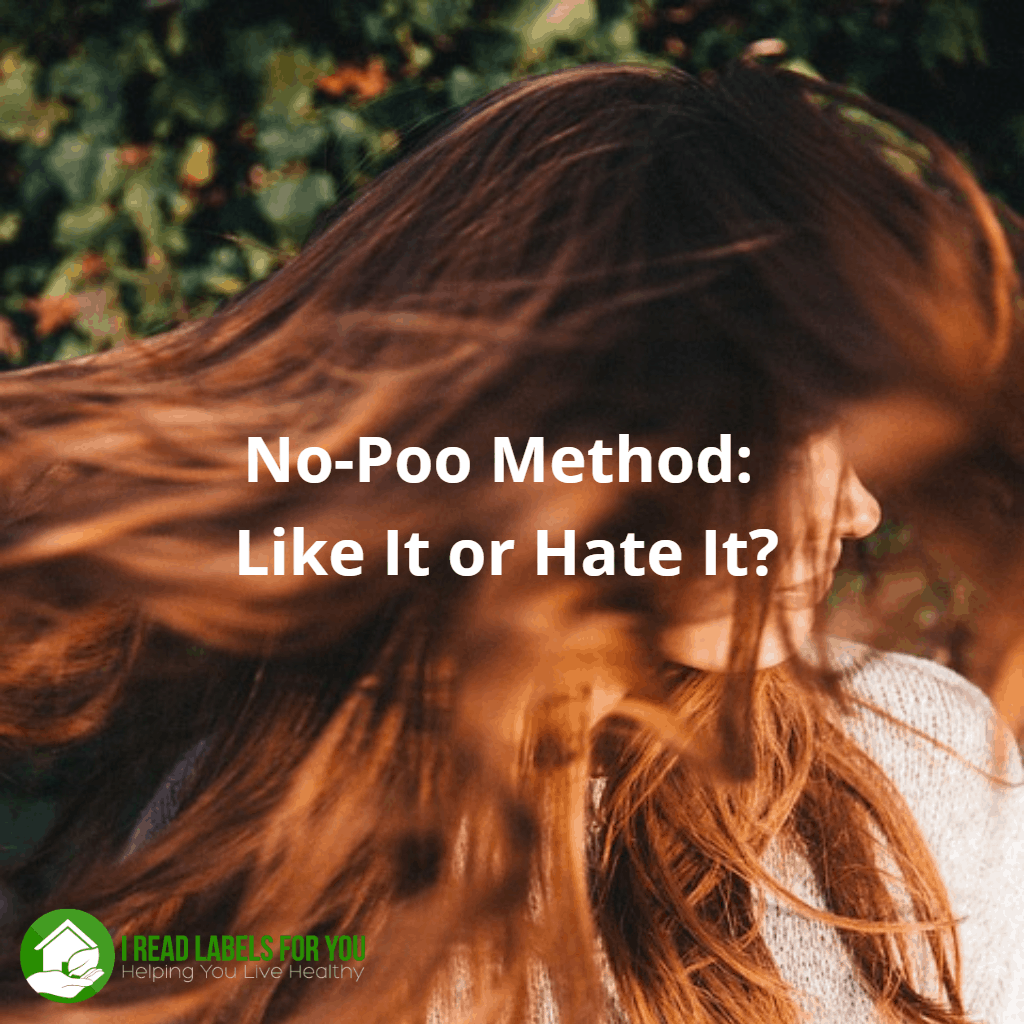
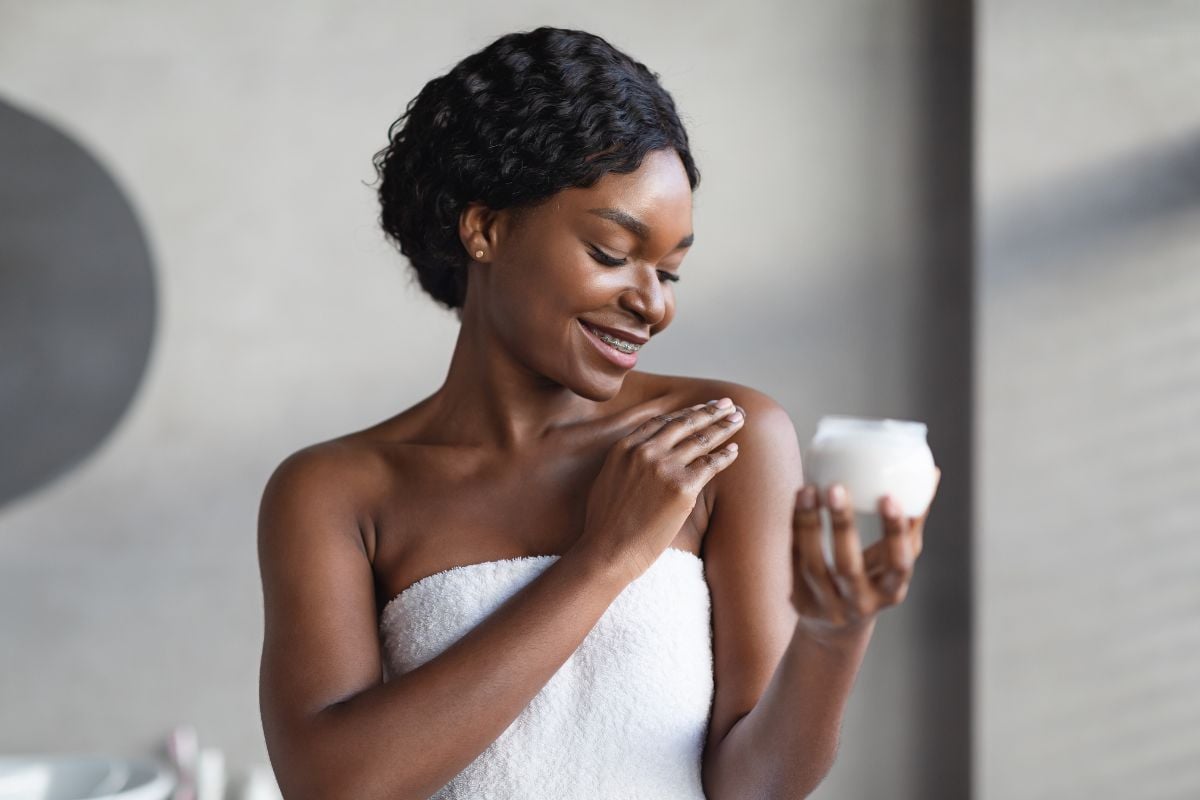
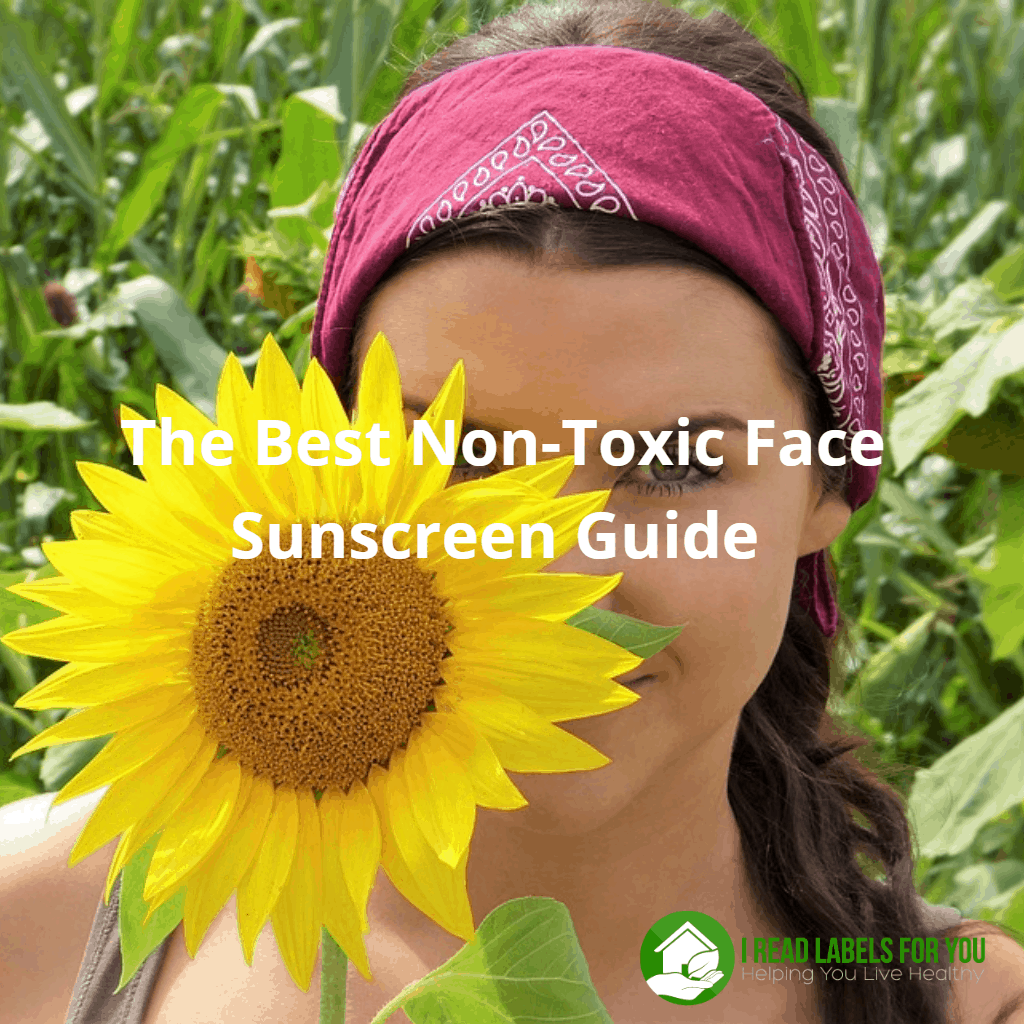
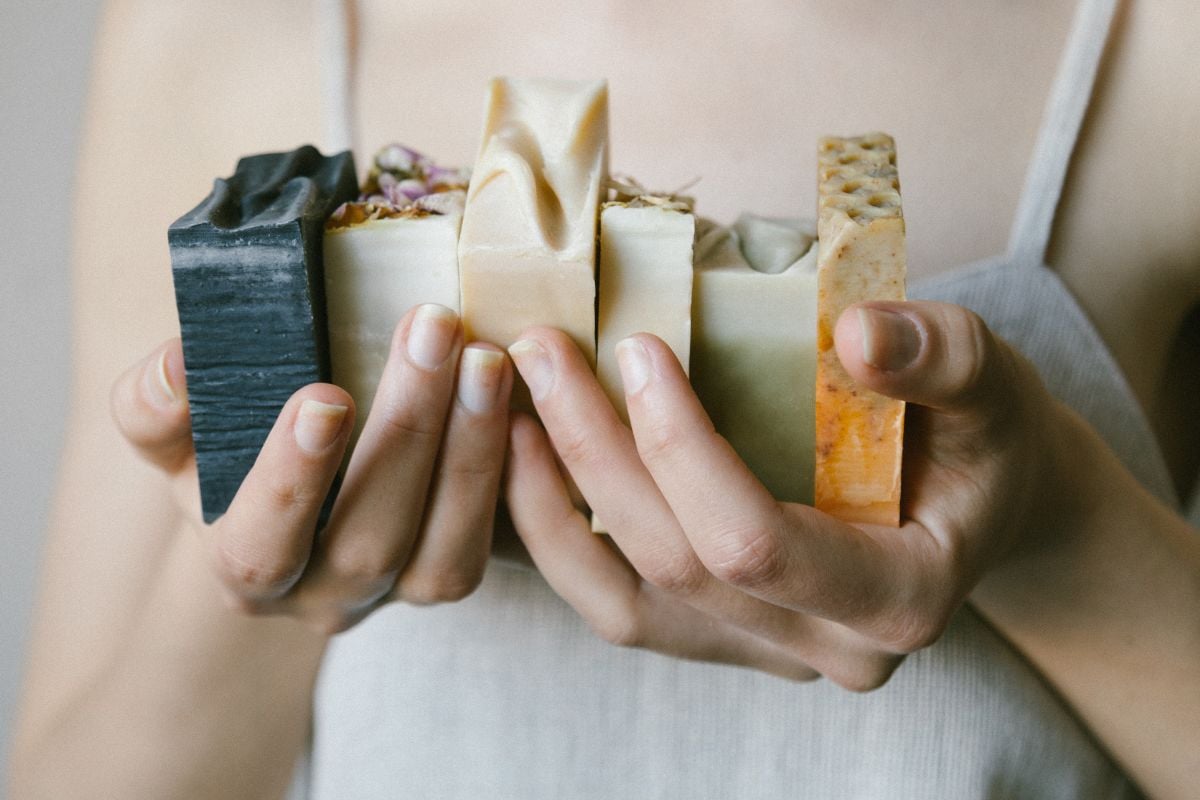
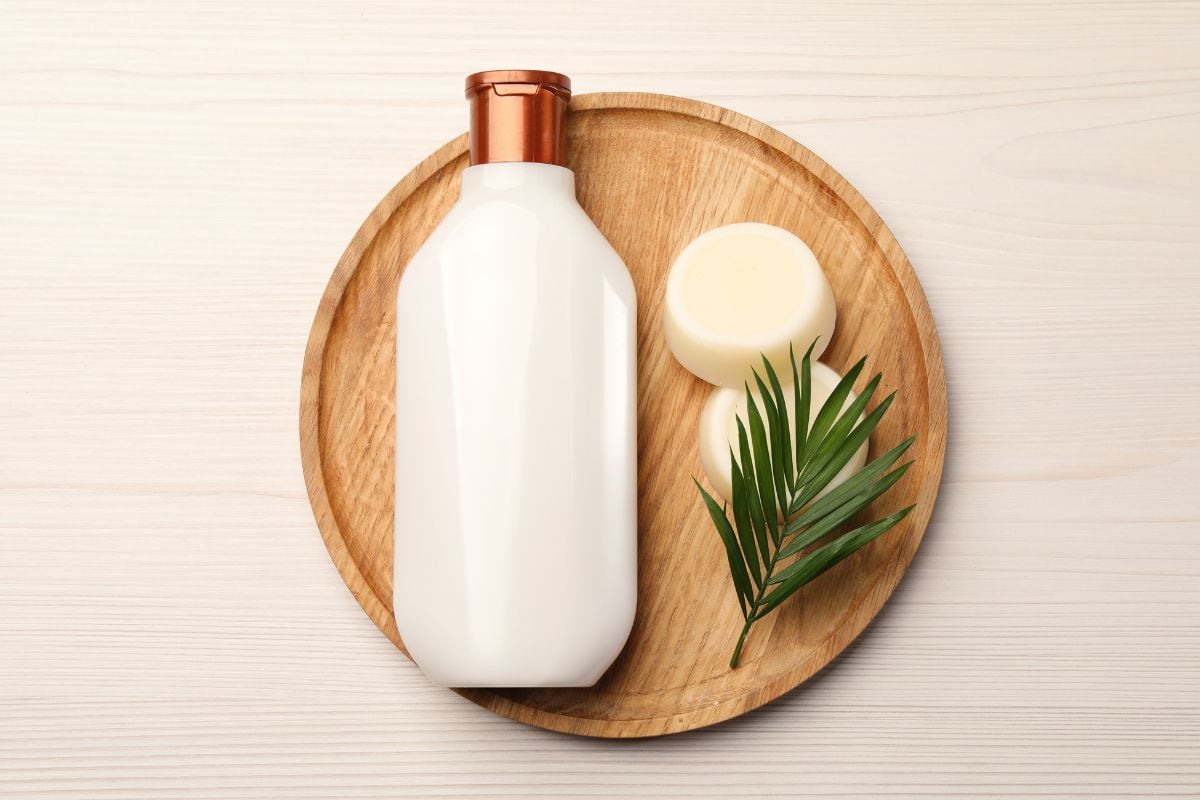
Hello Irina and others 🙂
Being an organic gal (like many of you I’m sure) and a Naturopath, I just had to share a shampoo (and conditioner as well) that I’ve finally found and been using successfully for several months now:
Dr. Christopher’s BF&C Shampoo (and Conditioner) for Normal Hair
I love it as it has NO toxic ingredients whatsoever and is primarily aloe vera gel… my thin, blonde hair (I don’t dye it but thinking of trying Hairprint soon perhaps) has never looked healthier!
Hope this help anyone who has been searching for years too!
Pam
Hi, Pam:
Thank you for commenting. I am always on a lookout for a clean shampoo that works well as well. Unfortunately, the ingredients of Dr. Christopher’s BF&C shampoo are not listed in INCI convention required by the FDA, which makes it hard to know what ingredients they use. For example, when they say coconut oil betaine, it can be coco-betaine or cocamidopropyl betaine, the latter I avoid. ~Irina
I’m very interested to read the updated blog on these products once it is available as I have been using John Masters products for about a month now and I am blown away. Best stuff I’ve ever used for sure. I was using the Body Deli Living Hair Shampoo and Conditioner but the John Masters products puts them to shame. Not even a close comparison. I have a pretty severe thyroid disorder and as a result I have lost a great deal of hair, which has always been thin, even before it started falling out. In just a month (of using the Rosemary and Peppermint Shampoo and Conditioner almost daily and Deep Scalp Follicle Treatment & Volumizer every other day and the Honey & Hibiscus Hair Reconstructing Shampoo once a week) I can’t express how happy I am. My hair is growing nicely, looks and feels heathy, it’s shiny and appears fuller already. I am beyond thrilled with these products!
Thank you so much, Holly, for your feedback! ~Irina
Hi Irina, I found your site in a search to figure out what happened to the formula in John Master’s Lavender/Rosemary shampoo. I’ve emailed them twice and eventually got a response that had nothing to do with my question. It looks like you might be providing an update at some point. I’m wondering if there is a quick answer as to whether or not it has changed. It seems more runny and gelatinous, it does not penetrate my hair anymore. My first thought had been that they were watering it down in an effort to yield higher profits. After reading through some of the comments, I’m thinking they pulled out a toxic, yet helpful ingredient! 🙂 Thanks for any insights.
Hi, Alex:
There is so much on my plate right now. Realistically speaking, I am not sure when I will get to it. But thank you for asking and letting me know. What do you think about the re-formulated Hairprint shampoo that I recently reviewed: https://ireadlabelsforyou.com/hairprint-herbal-shampoo-review/ ~Irina
Thanks for your reply Irina. I was excited to consider Hairprint, but unfortunately they do not have a product for natural blondes, which myself, husband and kids all are. Hoping they are able to develop something soon, I’d love to get rid of my grey!
Also, I did hear back from John Masters and got this response:
“As far as the Shampoo for Normal Hair goes, the formula was updated recently. We actually added new ingredients to improve the formula and lather. We’ve added more organic content and are now using new ingredients to increase performance.”
While this may be true on their end, it does not increase performance for my hair type.
Alex
Hi Irina,
Great blog, and have you tried Living Libations Seabuckthorn Shampoo?
Coco
No, I have not. Have you? It seems a bit too expensive for me. ~Irina
I just tried it for the first time and so far my hair feels clean, soft, silky and moisturized; and I live in Vancouver Canada where it is currently cold, not great for skin. You are correct about the price, far too pricey for something that is instantly washed down the drain. My search for the ideal natural based shampoo continues. Thank you for such an informative blog, so appreciated. Be Well, Coco
Hi Irina!
Thank you for all your hard work and the write ups. I’ve switched to natural shampoos about over a year now. I started with John Masters as well but eventually found Morrocco Method and to my limited ingredient knowledge it seemed amazing compared to the rest. Morrocco method definitely improved my hair quality over the year and might have even helped with growing back some baby hairs (I lost a lot of hair a year ago). However about half a year later I developed very itchy scalp and flakes and it doesn’t seem to stop so I’m considering switching shampoos.
I would really like to know if you tried or your thoughts on Miessence shampoo for normal to dry hair? I’m about to order it as the list looks pretty good…
Here’s the link
http://www.miessence.com/shop/en/product/12101/desert-flower-shampoo
Thank you so much!
Hi, Victoria: Yes, I have looked at this shampoo before and their ingredients look good to me, too. You can use this link make your purchase to get me some credit. Thank you in advance. Please let me know how you like the shampoo. ~Irina
It looks like the ingredients have changed since you posted this blog?
The official website shows different ingredients.
I will be updating this post soon. Thank you, John. ~Irina
What about fragrance-free Shea Moisture Shampoo for my interracial baby who is almost 1? She needs moisture as the Castile soap (Mamasuds) leaves her hair very dry and frizzy
Thank you for asking! I will be addressing your question in the next week’s post. Stay tuned. 🙂 ~Irina
Hi Irina, I have the same issue as you (dry sculp), so most of the shampoos dont work for me because they tend to make my sculp even drier. Until I tried Prairies natural (avalanche therapeutic shampoo). Have you ever tried it and what do you think about the ingredients?
Purified water, cetearyl alcohol, glycol stearate, emulsifying plant wax, d-pahthenol (pro-vitamin B5),aqueous extract of nettles, sea kelp, horsetail grass, sage, oat straw & arnica, aloe vera, ascorbic acid, silk amino acids, zinc omadine, magnesium sylicate/selenium, msm crystals, essential oil blend of white pine, eucalyptus & peppermint, vitamin E, cysteine/methionine, glucose and glucose oxidase & lactoperoxidase, citric acid & sodium citrate & natural fragrances.
Hi, Angie: Does this shampoo produce any foam? There are no surfactants listed. Also, I do not like that they do not follow INCI requirements for listing ingredients, which makes it a guessing game what they ingredients are, e.g. emulsifying plant wax. ~Irina
Thanks for this info! I would love you to try out my haircare line and give me your honest opinion. You will NOT believe the minimal ingredient list in my shampoo and conditioner. I too am on the hunt for products without synthetics. I ended up starting a business for lack of alternatives 🙂 Email me for the coupon code for free samples!!
Hi, Kim: before I try products, I study their ingredients to see they are formulated to the standards of I Read Labels For You community. I also look into whether sufficient preservation system is used. Currently, I use and love Hairprint shampoos and conditioners. I haven’t seen the ingredients listed on your website, please email me with a list of ingredients. Thank you for contacting me! I look forward to hearing from you. ~Irina
Hi! I’ve just started using John Masters Organic Citrus/Neroli Conditioner for my dry curly hair. I use Dr. Bronner’s Lavender soap for shampoo and this for conditioner. I was, however, shocked to find out that there is sodium benzoate in the product, since the mixture of sodium benzoate + citric acid (from the oranges) is a known carcinogen. Are there any products you can suggest that don’t contain any preservatives at all? Especially not ones that could increase my risk of cancer.
Hi, Jess:
Is there an information source you can provide regarding sodium benzoate reacting with citric acid? My understanding is that sodium benzoate may react with ascorbic acid, not citric acid, to form carcinogenic benzene. That’s why it is important to avoid eating food with sodium benzoate used as a common preservative. Thanks. ~Irina
Hey, I was wondering if you’ve ever looked into the shea moisture line of shampoos. Particularly, this one. http://www.target.com/p/sheamoisture-community-commerce-hydration-intensive-shampoo-13-oz/-/A-15651081
Wondering if you see any red flags here? Thanks!
Hi Ali, can you help me locate ingredients for it? Thanks. ~Irina
Water (Aqua), Decyl Glucoside, Sodium Lauroyl Lactylate, Glycol Stearate, Glycerin (Vegetable), Hydrolyzed Rice Protein, Panthenol, Butyrospermum Parkii (Shea) Butter*, Fragrance (Essential Oil Blend), Adansonia Digitata Seed Oil, Guar Hydroxypropyltrimonium Chloride, Trichilia Emetica Seed Butter, Ficus Carica (Fig) Extract, Caprylhydroxamic Acid, Caprylyl Glycol, Stearamide AMP, Aloe Barbadensis Leaf Juice, Tocopherol, Honey
It looks pretty good! Do you like it? Looking at the preservatives, it seems that its shelf life is short. ~Irina
I haven’t used it, myself, but was also interested mostly due to the brand…. I & my toddler use the Shea moisture African black soap deep cleansing shampoo & balancing conditioner & I REALLY like it for the two of us.
Looks like a good one! ~Irina
Thanks Irina! As always you are very helpful. I guess I’ll switch back to Acure repairing shampoo which I used in the past but didn’t like so much. Hairprint customer service said the shampoo is coming out in September so well just have to wait. What about leave in conditioners? Do you have any suggestions?
Hi Irina,
Are you still using this shampoo? I know you are also using the hairprint so how does it work for you? I’ve been using hairprint for the last 6 months and it never truly worked for me. The color and grays have gone back to their previous color after a couple of weeks. Upon talking to their customer service I was told John Masters shampoo that I was using (honey&hibiscus) was coating my hair and the pigment wasn’t getting to the hair shaft. I was told to stop using this shampoo. What are your thoughts on that? I’m at a loss and don’t know what else to use…
I know. It is frustrating. I do not use it any more. There is wax in the shampoo that normally is good but it probably blocks Hairprint from being effective. Hairprint is developing their own shampoos, which should come out soon, possibly this summer. In the meantime, you can a shampoo from this list. ~Irina
You haven’t answered people’s requests for a conditioner to use with Hairprint. Please do! I use Hairprint and want to find a nonallergenic conditioner that has no blockers…
Hi there: To tell you the truth, I have not found a conditioner that meets all my high standards yet. By the way, if your hair is not damaged by chemical dyes (and if you use Hairprint, it won’t be), you do not even need any conditioner. I have been using this leave-in conditioning mist. You might want to try it. Let me know you think. ~Irina
I ordered By Valenti bar shampoo for my 7 year old. It works great!!
Do you use a “conditioner” with it? What kind?
I do not use any conditioner on my son’s hair. Thanks. ~Irina
Hi Irina, I’m just wondering what you think of Sunfood Natural Plant Based Shampoo. I’ve been using it for a few months. Of all the natural shampoos I’ve tried, I like this one the best. My hair is very soft and shiny and it doesn’t seem to leave a build-up.
Thank you so much for the work you are doing in getting this important information out. I was going to try Madison reed but won’t now that I have read what you wrote about it. I have been using Morroco method light brown henna, which gives me nice shine but my pure white roots have an orange tinge and the rest of my hair is a dark brown, nothing like the dark blonde I originally was. I also use their apple cider vinegar shampoo, and my hair is shiny. The shampoo looks like mud and doesn’t have any foaming agents so there is no lather, and I’ll probably continue to use it, but not the conditioner because it makes my hair too oily. I do miss my blonde.
Hi Irina! I have just discovered your blog and I am really enjoying it. I was wondering if you have any recommendations on natural and organic deodorants? I have tried making it and buying some brands and they mostly cause my armpits to get irritated and itchy. Please advise if you can. Thank you!
Yes, I do. Please check out this blog post here. Thanks! ~Irina
Hi Irina, what are your thoughts on using just caslight as a shampoo and the caslight bar soap for the body? It seems like such a great product but worry its better for cleaning the home than the body? I used to use WEN and realize how tricky the manufacturer was with hiding the real ingredients in the product. I must admit, I worry that my hair will be too dry without a conditioner. Are there any you recommend?
Thank you, thank you!
Hi Leah: did you mean castile when you said caslight? Some people use castile soap with a great success. And I actually have been using it on my 3 year old son’s hair with success. When I used it on me my got dry and I do not think conditioner would solve dryness. It will probably just mask it. Let me know if I can help further. ~Irina
I have been using John Masters Shampoo and I love it! But my hair is very thin that it gets tangled easily, especially right after I get up in the morning. Do you know any good conditioner that is not too bad? 🙁
Hi Ashly: thank you for asking. You might want to check out Herbaliz herbal vinegar rinse or frizz tamer. Let me know how these products worked for you, if you try them. My hair used to tangle when I used chemical hair dyes. Not anymore.
~Irina
Have you ever heard of CALIA shampoo and conditoner!? Calianatural.com they seem to have super clean ingredients whats your stand on it? Thank you
Hi Anna: Thank you for checking with me. I just looked at their website and my understanding is that the way the ingredients are listed is incorrect. For example, for foaming agents, they name raw materials such as coconut oil but not what foaming agents were derived from coconut oil. We all know that coconut oil alone can’t be used to wash the hair. The way they list ingredients, reminds me of this story: https://wp.me/p3b5KF-12j
Thanks for the response! I am definitely taking small steps, the Annmaire skin care was the first step (but maybe I’ll have to re-evaluate that) and now the hair products. You breaking down the science for me is a HUGE help and exactly what I was searching for! Also someone who has tried multiple products so I don’t have to is greatly appreciated! You are an excellent resource and I’m sure its time consuming and probably expensive so thank you!
I am so glad I found you! I have just started my journey in dumping the chemicals and I started with hair care products. After two weeks of researching, asking friends, shopping around I felt completely defeated and ready to give up. Why is this so hard & confusing?! Friends recommended products but they had the same chemicals I was trying to get away from. I finally feel I have a resource I can trust! Thank you!!
P.S. I started using Annemarie Skin Care line & love it. I hope it’s as clean as they claim!
Hi Camile: thank you so much for joining my blog! I agree the journey of ridding of harmful chemicals is not easy for anybody. And it is a process. Not to feel overwhelmed and discouraged, I recommend taking small steps at a time and taking time to feel good about your accomplishments. I think my independent and unbiased science-based blog will help you stay on track. I tried Annemarie Skin Care line, too. I also concluded that plant oil-based skin care is the cleanest way to take care of the skin. Annemarie Skin Care has not made my top skin care picks yet. But I hope with a few minor adjustments, they will soon. By the way, I am running a skin care products giveaway next week. Do not miss it!
the best pick of the shampoo which is it …???
my requirements are i shampoo my hair daily i have some hair fall i want the nutritions for the hair to stimulate hair growth … I’m looking for some kind of shampoo with no sulphates paraben free
and also read glucosides shampoo is good …does the john masters have that …???
suggest me the best what u have felt so far with the knowledge of the label and ur digging to it …some thing not more affecting chemicals…i have made my statement clear to u understand i guess…
which is ur top pick of the shampoo ..u refer as i will not say john masters is best but my top pick of the three …i want the best pick of us the top which one ?
Hi Venkat, I am working on it. Please subscribe to my blog so you don’t miss the updates. Thanks.
Hello, Irina. Thank you so much for sharing your research. I am new to this toxic-free world and have really enjoyed reading your site! You mention in your last comment that in terms of toxicity, Ava Anderson shampoo is not perfect. Can you tell me more about that? I am considering trying this product line and would love to know more about what you think about this shampoo and any other Ava Anderson product you have researched. Thank you!
Hello Jennifer: Thank you for asking. Actually, Ava Anderson shampoo looks very good. It is their conditioner has behentrimonium methosulfate, which is ammonium quart with no safety data. It is a pretty common ingredient in “natural” shampoos and conditioners. It almost seems to be unavoidable.
Hi Irina,
Thank you so much for all your research and in-depth analysis. It definitely helps me as I am trying to switch everything over. Have you tried Griffin Remedy or Ava Anderson’s shampoo and conditioner? From my limited knowledge, the products seem safe and I have been quite happy with the results. What would you think?
I have used Ava Anderson and I like its performance. In terms of toxicity, it is not perfect but it is one of my top picks. As for Griffin Remedy, I believe they are in violation of ingredient disclosure rule. Instead of naming surfactants used, they state “coconut oil blend with emulsifiers and sugars.” That’s like saying this salad has fruits and vegetables. I sent them an email. Thank you for asking.
Thank you so much for that! I’m still learning so it’s good to know that Griffin Remedy isn’t disclosing their ingredients! Good to know Ava Anderson is one of your top picks! 🙂
With all of the products you have tried on your hair, which products do you currently use on your hair. It looks so healthy and lush.
Thank you, Wendy! At the time of the picture, I was using John Masters shampoo described in the post. I also colored my hair with henna, which is a great hair conditioner. Now I am using a different shampoo not because I did not like John Masters but because of the nature of the blog I have to keep trying new products.
I am so glad to have found this site! Thank you, especially, for your post about hair dye. I am going gray and also entering the teaching profession after being a stay at home mom and student for many years. I want to be professional in appearance while maintaining my non-toxic practices. I am going to try Henna after researching the correct methods and best products.
As far as hair care, I have been trying different methods for years to get away from conventional shampoos. I have tried using Dr. Bronner’s liquid soap, which I love for other uses but is not great on hair. I have tried baking soda and apple cider vinegar, which really dries my hair. I liked that my scalp was actually clean, though. I have tried water only…Yuck! I am active with three boys and we are outside all the time. Water only does not clean anything…I have tried expensive organic and all-natural shampoos but every sudsing detergent, sulfate-based or plant-based, makes my hair brittle and it breaks constantly.
For the past few months, I have been using Dr. Bronner’s Unscented bar soap on my scalp and raw honey as a conditioner since it is a humectant. After my hair is almost dry, I apply avocado oil. It is not great but my hair is not breaking…There are hardly any hairs in my brush or the shower drain anymore! My wildly curly/wavy (no uniformity) hair actually looks somewhat nice, although my scalp is still not where I want it to be as a professional.
I have recently discovered Morrocco Method hair products and ordered the starter kit and boar bristle brush. Their hair care is raw and vegan and has no sudsing properties. They also sell Henna and offer videos and other How-To’s on how to apply it. Have you ever heard of or used this brand? It is pretty expensive but I am at the point where I need something to work for me and am willing to pay extra…
Thank you for all you do! I love discussing natural and non-toxic living with others who are interested in a higher quality of life.
Hi Anne: I am certainly happy that you found my blog! I admire you for your hard work and persistence. I do not know how much you read but I went through a similar story. And yes, Morrocco Method was one of my stopping places. At that point, my hair was in such bad shape that I would be willing to try something new if I whole-heartedly believed in the safety of the ingredients. That did not happen, at least not yet. The company considered my feedback and said they would be making improvements. In the end, I had to revert to the conventional shampoo. I heard from my other blog readers that Morrocco Method liked their products. I would love to hear your feedback.
Hi, Anne: how are you doing? How is your new job? I hope you found your perfect hair regiment. I know you have tried a lot of different things. What hair products have you stayed with? ~Irina
Hi, Irina. I found this shampoo at Laurel Whole Plant Organics store and apparently it’s the “cleanest” that Laurel could find on the market. It’s called Josh Rosebrook Shampoo and I bought a mini version of the shampoo and the conditioner. I like them both and my hair was the softest I’ve ever had it after I washed and conditioned it with JR products. I’ve only used the shampoo and conditioner 2x but so far so good. Take a look at the ingredients list and see what you think.
http://joshrosebrook.com/products/deep-nourishing-shampoo
Hi Emilia: I have tried this shampoo. And yes, the ingredients are clean. And it worked well at first. But after about 5-7 washes I got so much soap build up that I could not get my hair clean. I had to revert to a non-soap shampoo. 🙁
Been loving all your posts! Thanks. Can’t wait to get this shampoo…how are their conditioners? Safe as well?
I am finishing up my first bottles of shampoo and conditioner. I like them and am considering buying more. I have tried looking up each ingredient on the EWG website and they seem okay (with my limited knowledge), but I was hoping to find out your thoughts. Thank you.
I would say it is in the same category with John Master’s. I do not see any red flags except for the same issues that apply to all shampoos across the board. Not every ingredient that could be organic is organic though. Do you know where it is made?
According to an email I just received from them, all of their products are manufactured in California.
Have you looked into Andalou Naturals shampoo? Thank you.
Yes… Are you using the shampoo or thinking about trying it?
Hi Irina, I am still desperately searching for a decent non-toxic shampoo option. Currently using baking soda and vinegar but I do need to find something. I know 100% Pure makes several different scents of shampoo. Have you tried any of the others? I had no idea about the honeysuckle. These potential endocrine disruptors are scary because they can throw off hormonal balance and metabolism, among other things. Thanks for the tip. Like you said, shampoos are the most difficult to replicate without toxins and without unwanted side effects like buildup or dryness.
Do not hesitate to ask me about any shampoo. I believe I read ingredients of pretty much all shampoos on the market. Can you imagine? Also, I am going to contact John Masters Organics and voice my thoughts on their product. Feel free to do the same.
Loved the article. Wondering of you have tried any shampoos from either 100% Pure or BumbleandBee since you mention both companies on your site and they both sell shampoos?
Hi, Maria! It is always good to hear from you. Yes, I studied the ingredients of the both shampoos and tried them on me as well. 100% Pure felt good on my hair. It did not leave any soap residue, which is what happened with all the other soap-based shampoos or shampoo bar. It is a mystery to me why it was different… I stopped using it because I learned that Honeysuckle preservative used in 100% Pure shampoo is controversial. While it seems pretty innocent, honeysuckle contains parahydroxy benzoic acid that may behave in a similar way to synthetic parabens, which are endocrine disruptors. Since there are no sufficient studies available to prove one way or the other, I prefer to stay away from Honesuckle preservative for now. As for Bubble and Bee shampoo, it is soap-based and while initially it worked well after a month or so I got so much soap buildup that I had to use baking soda and vinegar to remove it. What shampoo do you use?
I am so happy you are finding success in your quest! Your perseverance is paying off!
Good article Irina. I have been switching everything I use in general. I will definitely be trying the products of John Masters in the near future. I am always looking for more organic products. It is really the only way to go since all the regular products that are commonly used in households across America are loaded with chemicals. Thanks for the great information like always.
Hello Irina:
Do you know if gluten intolerant people can tolerate wheat germ oil in products? Rowena
I think it depends on a condition. If you have a strong allergic reaction to gluten, it would be prudent to stay away wheat germ oil, too.
http://www.amazon.com/John-Masters-Organics-Bare-Unscented/dp/B004UF1P3M/ref=sr_1_fkmr0_3?s=beauty&ie=UTF8&qid=1426801673&sr=1-3-fkmr0&keywords=John+Masters+Organics+-+Shampoo+Hair+Reconstructing+Honey+and+Hibiscus
What about this unscented one – cheaper too? http://www.amazon.com/John-Masters-Organics-Bare-Unscented/dp/B004UF1P3M/ref=sr_1_fkmr0_3?s=beauty&ie=UTF8&qid=1426801673&sr=1-3-fkmr0&keywords=John+Masters+Organics+-+Shampoo+Hair+Reconstructing+Honey+and+Hibiscus
I have not tried it so I do not know how it works on the hair. As for the toxicity, it is very similar to the reconstructive one. It has the same preservatives. Some of the surfactants are different but the same type of story – not much information available. No red flags with other ingredients. I would give it a try.